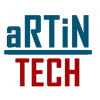Introduction
In the realm of quality management systems, calibration is a critical module. It is essential in production and manufacturing industries to ensure the accuracy of all measurement tools within a company. These tools could be owned by the company or belong to operators or technicians. Each tool must have a unique number, and a record of its calibration must be maintained. This ensures that the accuracy of these measurement tools meets our internal requirements and is precise enough to ensure that the products we manufacture fall within the customer’s drawing limits.
The Calibration Dashboard
The calibration module is part of a larger system for quality management. The dashboard provides a list of all modules within the system. Under the calibration module, there are two categories: gauge type and gauge list.
Gauge Type
The gauge type refers to the different measurement tools within the company. These could be different types of calipers with varying sizes, accuracies, and resolutions, or different types of micrometers, among other measurement tools. When we say gauge type, we are creating a unique record or identification for each gauge we have in the company. For example, a caliper 0 to 8 inch with a measurement range of 0 to 8 inches and a resolution of one tenth could be one gauge type.
Creating a Gauge Type
To create a gauge type, you need to define the gauge type, measurement range, resolution, and unit for measurement. If there are any calibration instructions for this type of gauge, you can copy and paste them here. You can also attach any relevant documents, such as catalogs or standards.
Parameters for Calibration
When calibrating any tool, you need to use different references. For example, for a micrometer, you might have different gauge blocks or standards in place. You measure with the micrometer and compare to see how much it deviates from the standard reference. If the deviation is within your allowance, it passes; otherwise, it is rejected.
Gauge List
The gauge list is where you assign the gauge type to the specific tools within the company. For example, if you have several micrometers of 0 to 1 inch with the same resolution as defined in the gauge type, you can assign them to different individuals within the company.
Creating a Gauge List
To create a gauge list, you select the gauge type from the list you have already created. You then assign a unique gauge number, manufacturer, model, and location. You can also specify who will use the gauge, the calibration interval, and the next calibration date.
Calibration
Once you have created the gauge type and gauge list, you can proceed with the calibration. You can record the calibration date, time, temperature, and humidity at the time of calibration, and whether the calibration is internal or external. If it’s external, you need to provide the calibration company and certificate number.
Artintech ERP’s calibration module is a comprehensive tool for managing the calibration of measurement tools within a company. It ensures that all tools are accurately calibrated, meeting internal requirements and ensuring the quality of the products manufactured. With its user-friendly interface and detailed record-keeping capabilities, it is an essential tool for any company that values precision and quality control.




